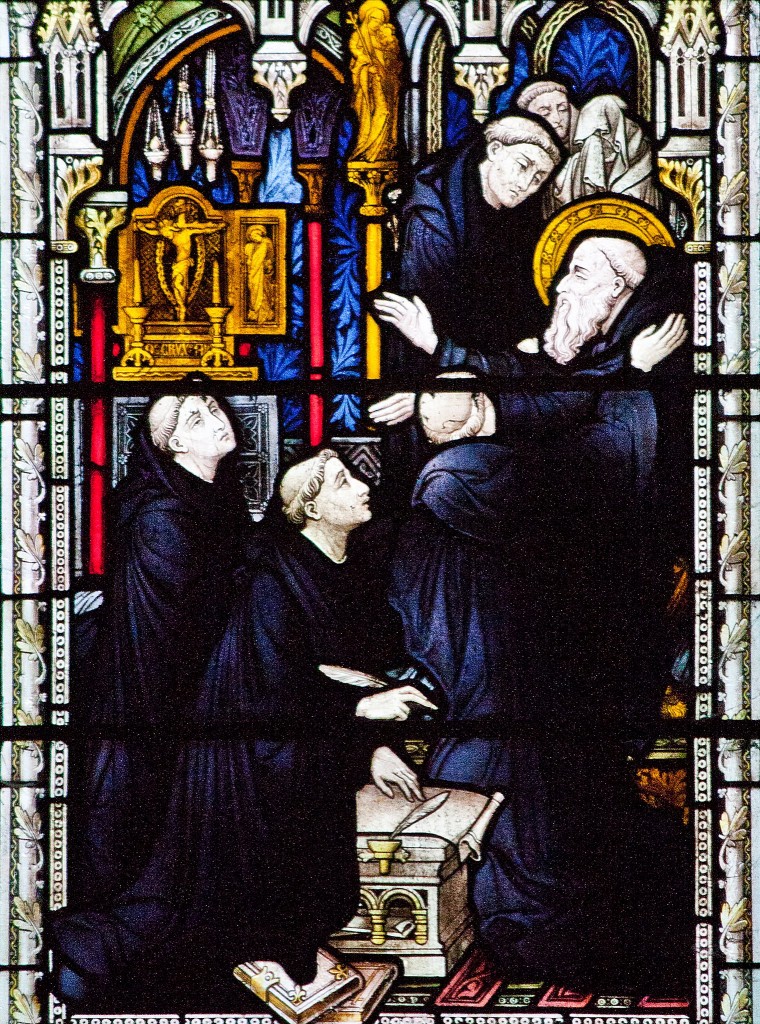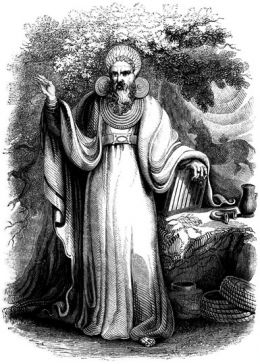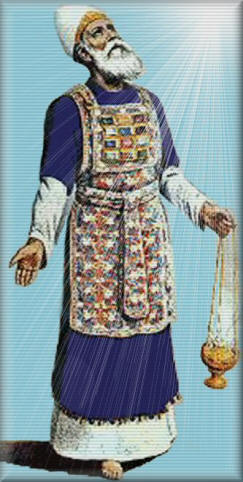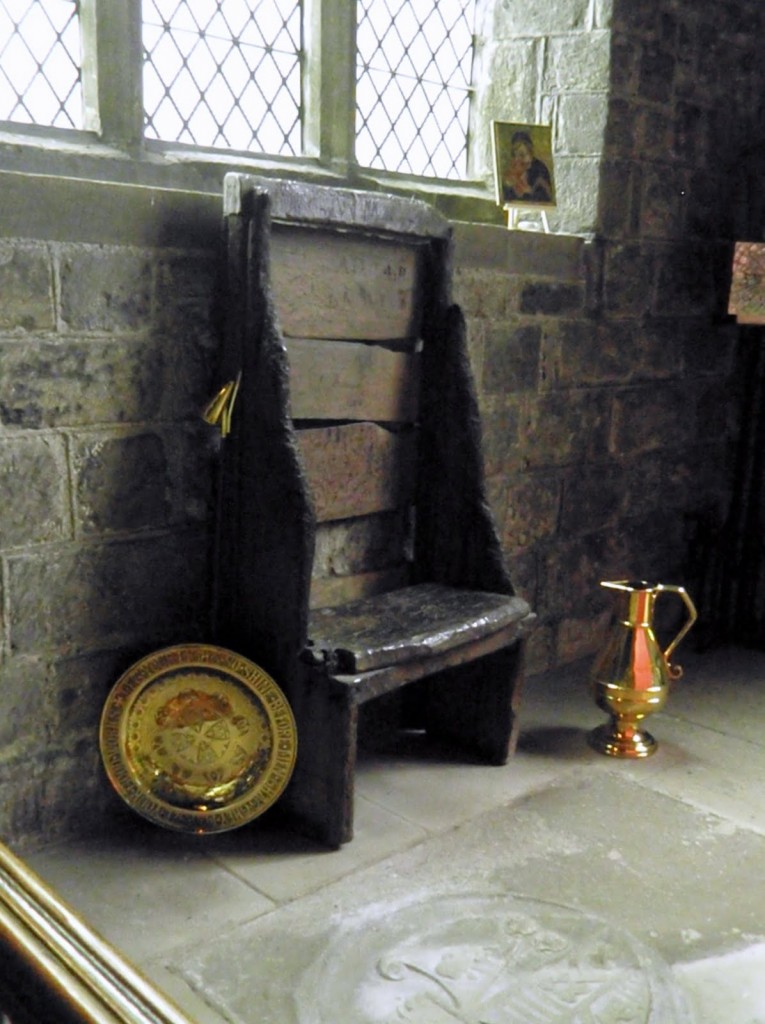The true identity of the most famous wizards of all time, Merlin has been speculated upon for many centuries. Merlin is best known as being the advisor to King Arthur from the ancient Arthurian legend. A legend, that today has been made world-famous in the media empire, with stories such as “Harry Potter” where Merlin is cast as one of the greatest wizards of all time.
advisor to King Arthur from the ancient Arthurian legend. A legend, that today has been made world-famous in the media empire, with stories such as “Harry Potter” where Merlin is cast as one of the greatest wizards of all time.
In this article I do not want to go over all the various theories by “other speculative authors,” but ancient facts that connect Merlin to one of the most famous Saints of the Catholic Church and Father’s of English History who ever lived. This man is known in history as Bede (Beda). The same man who was the original author of the allegorical story of the building of Solomon’s Temple; using both the souls of believers in Christ, that are both Gentile and Jewish as living stones in the building of the Temple. The exact same world-wide plans used by Freemasons and Zionists to this very day.
Before I get into all the details and facts supporting my theory, I would first like to point out that Saint Bede was a real person, and Merlin was a fictional character based on a real person. This same method of story telling using real facts or people has been used time and time again throughout history, and especially in great history books like the bible where every single character and location is given an allegorical (alternate) name that is simply not the original name. This fact is paramount in attempting to reconstruct or understand true history.
If Merlin was not a real person, then we need to locate someone who may have been alive around the same time, and who engaged in similar activities as Merlin. In researching this subject, you will find stories told in British poetry, that tell of a ‘bard’ driven mad after witnessing the horrors of war, who fled civilization to become a wild man of the wood sometime around the 6th century. This is key in tying Merlin to Bede, because Saint Bede had descended from the Druid Bards in the Celtic Church when it had merged with the Roman Church. Bede was also said to be born in Britain in the 7th Century. This time would coincide with the birth of the “Arthurian Legend,” and the similarities between Bede and Merlin have just begun.
Merlin wears a blue flowing gown.
The Druid Bards in training wore a blue gown. 
Bede was also said to have worn a blue gown.
The Jewish High Priest also wears a blue gown.
Is this all just a coincidence?
There have been many genuine prophecies that have been attributed to the real Saint and Father of English History, Bede. He had prophesied the victories of Joan of Arc (1429). The fictional Merlin was said to have done the same thing. In fact, Bede was well-known to have sat in what is called today, “Bede’s Chair” or the “chair of prophecy.” A chair made of Oak, the favorite tree of the Druids, and it was in this ancient oak chair pictured below where he would regularly meditate and pray.
Bede’s original chair still sits at St. Paul’s, Jarrow. Jarrow is well-known as an Ancient Celtic center of worship for the Mother Goddess, who we know as the Virgin Mary in Catholicism and who the ancient Greco-Egyptians would have known as Isis. This is when the veil would be placed upon the secret teachings and the light hidden from the profane.
These facts are explained by the 18th century author, James Johnston, in his book The finding of st. Augustine’s chair, where he writes;
It should also be remembered that Bede’s chair has passed through rough times. The monastery at Jarrow was burned by Norse pirates, A.D. 794, and again it was destroyed in the ravages of the country north of Tyne, after the unsuccessful revolt against William the Conqueror, A.D. 1070. So the chair must have had rough usage, which necessitated some plainly visible repairs.
Probably, also, some alterations in its style may have been made in carving away artistically any damaged portions, when it was taken from Bede’s cell into the church, which transfer probably took place when the monks were removed, A.D. 1083, from Jarrow to the new monastery of St Cuthbert, Durham.
It was a third time roughly handled by an antipopish mob, A.D. 1745, who, excited by the progress of the young Pretender across the Border, seized it as a “Popish relic,” and carried it to the Durham marketplace to burn it. Fortunately it was rescued from the mob by the townsmen. This last adventure necessitated much of the repairs to the back of the chair. How it was saved from the fires A.d. 794 and 866 and again A.d. 1070 there is no history; but as Simeon of Durham, who saw Bede’s cell, described it as “that little mansion of stone where he was accustomed to sit, to meditate, to read, to dictate and to write,” and since Leland described it as “entire as a building, low in its pitch, small in size and vaulted in its roof, containing an altar yet bearing in its front a piece of serpentine marble inlaid in the substance of it,” we may fairly infer that it was separate from the main buildings, and so must have escaped the fire.
The last-mentioned incident, the attempt of the mob to burn the historic chair of Bede, is full of interest and helps us to understand how it was that Henry VIII. could successfully carry out the Reformation; as much a political as a religious movement on his part.
These events listed above that all appear to coincide with Bede, are some of the most important in all of religious history over that last 1,500 years. Around the time right before Bede would have been born, there was Saint Augustine who was a tremendous influence on Bede. Augustine had also sat in what is called, the “Metropolitical Chair at Canterbury.” Bede had written about Augustine in his 7th century book, The Ecclesiastical History of England, that made him Father of English History. In this book Bede explains how the holy Pope Gregory sent Augustine, with the help of King Æthelberht, ‘summoned the bishops and teachers of the neighboring British kingdom’s monks, to preach to the English nation. Another coincidence to add to the long list I have already made, is that Bede was said to have been aided in writing this very book by a man named Albinus, who was abbot of St Augustine’s Abbey, Canterbury.
Originally the City of London was chosen as the location for the Seat for Augustine and his Successors. But later they would decide on Canterbury where Augustine would eventually end his days. It is at this chair in the Metropolis of the Kingdom of Kent where the ancient Rule of the Universal Church (Catholic) was established between Rome and the Celtic Church. Metropolis meaning, “seat of the king (Saint Peter)”. This name has been passed down to us by Bede, which is just another of the many connections between Merlin and Bede.
Details of Augustine and the Metropolitical Chair at Canterbury are found in the 18th century book, The antiquities of Canterbury: In two parts by Nicolas Battely;
Augustine first placed (as I said) the Archbishop’s Chair at Canterbury, which was then the Metropolis of the Kingdom of Kent, and in some respects the chief City of this whole Nation; (a) for Ethelbert, then King of Kent, was a victorious Prince, and by continual success in War had subdued all die Kingdoms of the Saxons round about, except the Northumbrians. The City of London belonged to the East-Saxons, whose King Sebert was Nephew to Ethelbert, and reigned under him
There are also ties with Saint Bede, the Court of Charlemagne, Paris, and that of King Arthur as well. Some of these theories have been written about several times in the past. In fact, some say that King Charlemagne may very well be King Arthur. This makes perfect sense, because in the story of Arthur, we are told he is crowned king and defeats the Saxons by slaying 900 with his own sword in one battle, and drives them from the ford of the river through the deep marshland. “And as the wild crane in the fen, when the falcons follow him through air, and he wearies in his flight, but the hounds meet him in the reeds; as he can find no safety whether in field or flood, even so the Saxons were smitten in ford and field, and went blindly wandering.” He then conquers all Northern Europe and France, and defeats the Romans.
In the story of the poet Layamon in “Layoman’s Brut”, as the text below is provided in the book, History of English Literature: From “Beowulf” to Swinburne – Page 50, by Andrew Lang, we find that in the last great battle in the west, both hosts fall—it is a field of the dead and dying and King Arthur bears fifteen wounds. He is alone with Constantine, to whom he entrusts his kingdom;
‘But I will pass to Avalun, to the fairest of all maidens, to Argante the Queen, an elf most beautiful, and she shall make my wounds all whole with draughts of healing. And afterwards I will come again to my kingdom. . . .
“Then came floating from the sea a little boat, and two women therein, shaped wonderfully; and they took Arthur anon, and bore him to that boat, and laid him softly down, and went their way. Bretons believe that he liveth yet, and wonneth in Avalun, with the fairest Queens of Faery.”
The name ‘ford’ I have written about before in an article, Jupiter: Father of Men & Lord of the Heavens. The Sumerians had called Jupiter Nibiru (Neberu ) and also mulu-babber – “bright sun-like star.” Nibiru simply means “ferry, ferryman, or ford” (mikis nibiri is the toll one has to pay for crossing the river), and is another title for Jupiter as it changes its position and crosses the sky. Jupiter was known to the Greeks as Zeus, the Egyptians as Osiris, the Canaanites as Elohim, and to the Israelites as Yahweh, and now Adonai.
The story of King Arthur and Merlin is the allegorical tale of an actual real life epic religious battle, that is playing out to this very day. An ancient time in history, when the old laws of Yahweh under the Old Testament were succeeded by the new laws of the New Testament under the rule of Jesus Christ through the Universal Church (Catholic). A time, when time was officially separated by the very man I had spoken about above, Saint Bede who may very well be Merlin. The same person, or should I say real life wizard who had configured the dating of history by Anno Domini – Latin for ‘in the year of the Lord’ or the initials of A.D., and its counterpart B.C. (“Before Christ”).
In my next article (Part II), I will expand more upon these connections between Merlin and Saint Bede.

Moe is the founder of GnosticWarrior.com. He is a father, husband, author, martial arts black belt, and an expert in Gnosticism, the occult, and esotericism.





I would probably suggest that Merlin is not a person but yet a state of consciousness
I like this about Merlin , What a eye opener . Thank you for a great fact of history.
Thank you so much for the kind comment!
I have read that Merlin was more than one person. Just as some of history indicates about Jesus. I had a cat named Merlin once.
Yes, just like there is more than one Tom, Dick and Harry or more than one Manny, Moe and Jack. Your wisdom leaves me ‘almost’ speechless…..